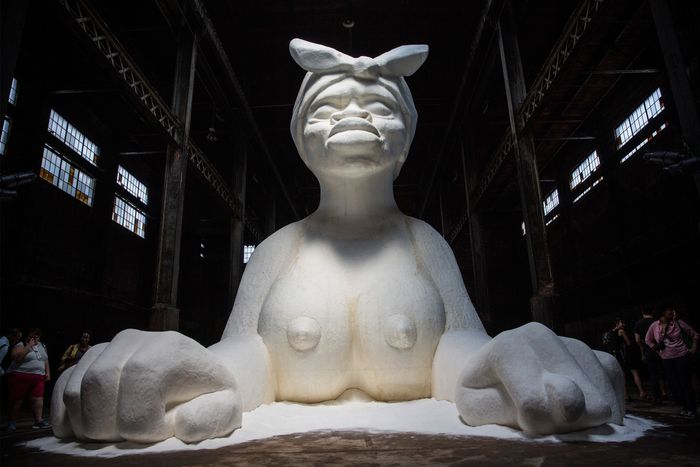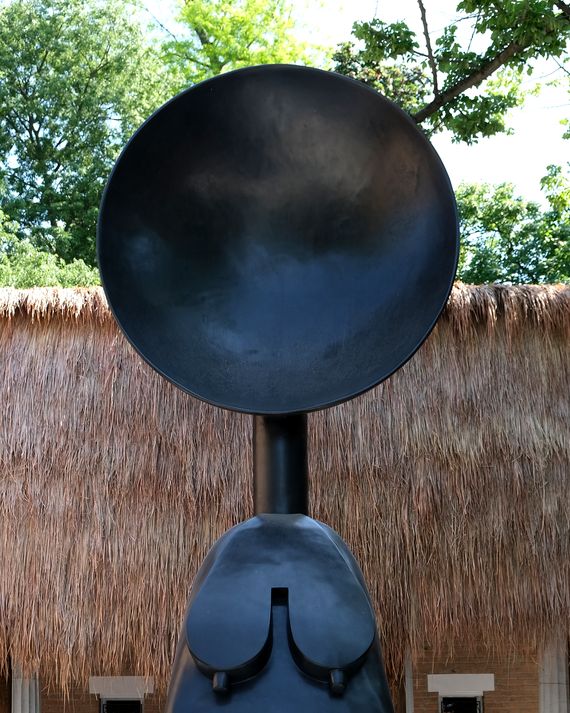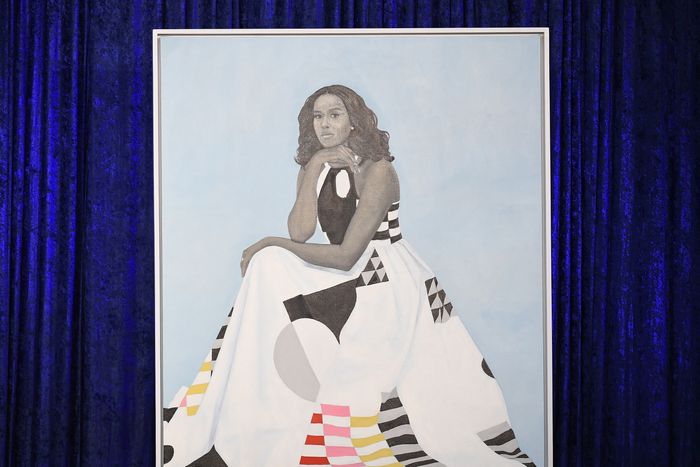WhatThe Raft of the Medusareveals about contemporary political art.
Save this article to read it later.
Find this story in your accountsSaved for Latersection.

It was the early 1970s.
It was a cosmographic perpetual-motion machine, a purgatorial charnel house.
The moment I saw it, something like Krakatoa went off within me.

That painting wasTheodore GericaultsThe Raft of the Medusa.
We see a large raft bearing a crowd of male figures at the mercy of heaving seas.
Their poses suggest a classical frieze, like Elgin marbles from hell.

It is a collective ash heap of individually vivisected souls stripped bare of humanity.
Each of the men is marked by a distinct, unforgettable gesture.
Every one of them looks hopeless.

Yet the work itself paradoxically gives hope for its very presence.
This is that moment.
From gleaners in a field to luncheons on the grass.

The subject matter of MichelangelosDavidis a biblical tale told in marble.
TheMedusascaptain was Hugues Duroy de Chaumareys, a 52-year-old royalist who hadnt been to sea in decades.
The ship was inadequately outfitted, carrying faulty maps and too few lifeboats.
Chaumareys separated from the rest of the rest of the fleet and soon was sailing alone.
The color of the ocean changed from deep blue to lighter green, then turned clear altogether.
In denial of the looming disaster, sailors took to fishing the abundant waters.
Then the angel of death breathed on them.
With a great scraping sound, theMedusashuddered, shook, and ran aground.
Dread came over the crew; the ship fell into hushed terror.
The crew scrambled to free the boat.
The ship was far too heavy to pull out by usual means.
Barrels of gunpowder were thrown over to lighten the vessel.
But Chaumareys refused to jettison the heavy cannon, which likely would have allowed the ship to float free.
ThusMedusas fate was sealed.
Panic set in, recriminations flew, anarchic ransacking broke out.
With that, everything fell apart.
Violence erupted; people panicked.
Many filled themselves with wine, water, and food and threw the remainder overboard.
People jumped off the ship to board the raft.
Many had to stand.
In the light of early morning, one of the boats tied a line to the raft.
When the rope was pulled, the raft barely moved.
The raft and its 147 souls were cast adrift.
Chaumareys and his companions sailed off.
The raft had no maps, oars, or navigational instruments.
On the first night, wind and white-capped waves wracked the raft.
By morning, about a dozen were missing and many others grievously injured.
The next day brought three suicides.
Then came hallucinations, hunger, thirst, fights, and delirious violence.
In this relentless frenzy, factions slaughtered one another.
By dawn, another 60 were dead.
On the third day, the hunger was excruciating.
Some ate their leather scabbards and portions of their greasy hats, and the cannibalism began.
Dead flesh was hung from ropes to dry.
Some survivors ate directly from corpses.
Those deemed too weak to survive were thrown overboard.
Nearly two weeks passed this way.
Then the sail began to disappear.
This is the deep content of the painting the moment when all hope is lost.
The calamity of theMedusais a story of abject human failure.
No one was really held to account, and no actual justice was served.
The continent was decimated.
Great Britain and Russia emerged victorious.
France was annihilated, its society in chaos.
It was a nation in mourning and at war with itself.
By July 1819, three years after the wreck, the painting was nearly finished.
In August, it was on display in that years Paris Salon.
One reviewer lambasted the scene as monstrous with nothing touching, nothing honorable.
Many were disturbed by its gruesome imagery and dark implications.
The painting was purchased by the Louvre not long after Gericault died at 32 of spinal tuberculosis.
Here were three Black men pictured as people, not property.
He is a Pieta for the premodern age.
The Raft of the Medusahelped accelerate the movement called Romanticism.
The elemental power and poetry of GericaultsMedusachanged me forever.
It told me things Ive known and lived by ever since.
All art is a kind of exorcism.
This is what gives art its power to change the conditions of our life.
Ours is an era of ships of state piloted by mad captains and crews gone crazy.
Structures are rotting; one epoch is dying; we do not yet know what is forming.
The art made in this period has been waist-deep in the mud of politics.
Concerned art has become a safe-space house style for artists, curators, and collectors.
Alas, for critics as well.
Marianne Moore once wrote, To doubt is merely a part of liking, and of feeling.
But theres almost no appreciation of this work that isnt infallibly sure of itself.
And to criticize this art is to be seen as being againstwhatever injustice the work spotlights.
You could hear this warlord sculpture all over the Giardini.
As with most work like this, it protects itself with veiled claims of being anti-market.
(I recall even the greatMarina Abramovicsniffing at a show for being about the market.
I yapped, But youre probably a multimillionaire from your work!)
Never mind that their budgets are probably bigger than what would go into making thousands of other artworks.
(Theres even a tony two-volume book devoted to it.)
There have been a lot of banners and text things of late.
Modernistlike dancers appear often.
Much of this work looks like set design and store display.
I recommend skipping to the next-to-last sentence, where the actual work might be addressed.
This sort of art often insists on one meaning.
(Its like insisting someone have an orgasm.)
The tendency is paralyzing, depressing, and annoying.
Theyre about the riots.
I said, No.
These are boring, generic black-and-white photographs.
We should not generalize.
Thereisgreat political work being made today.
But as with Gericaults great aesthetic-political accomplishment, this work is not solely and obviously political.
Art works in mysterious ways.
Yet each changed the way the world looks and the ways we look at the world.
The Sistine ChapelsLast Judgmenthas been seen as a weapon against the Reformation.
Depth charges go off in Sally Manns photographs that pull back the curtains of the taboos on adolescent sexuality.
You dont need long wall labels to tell you youre crossing some startling line to know this.
Its embedded in the art.
ConsiderSimone Leighs mind-blowing, shot-through-the-heart indictmentof how all things western are built on colonialism.
OrAmy Sheralds smoldering portrait of Michelle Obamawith her hair down, shrouded in a white gown with geometric patterns.
Sheralds smooth brushstrokes emit dignity, decorum, and something almost spiritual.
Sheralds mysterious picture is open to interpretation; it starts conversations rather than ends them.
It is also an announcement of artistic intention to break free of something.
Sherald paints in the conventional genre of figuration and portraiture.
Yet she uses this convention rather than letting it use her.
This wasKara Walkers 2014A Subtlety, or the Marvelous Sugar Baby,her colossal apparition of the universal present.
I remember thinking,Its like a god made this.
It seemed to land here as witness and a warning.
Walker called it a new world sphinx.
What poet Rene Ricard meant by democracy gone blind.